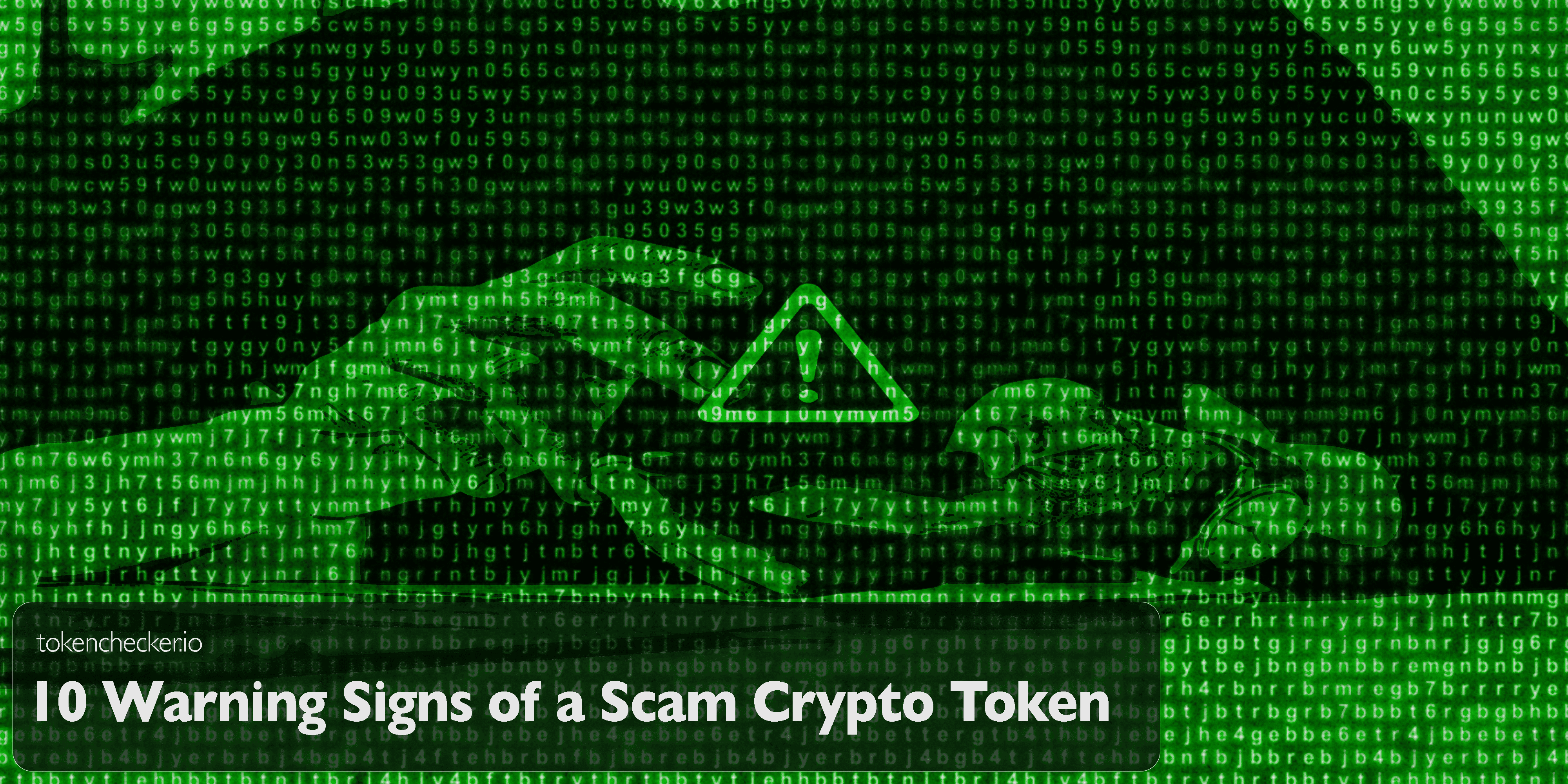
10 Warning Signs of a Scam Crypto Token
Introduction
In a market full of thousands of new tokens launching weekly, identifying which ones are scams is not just useful; it is critical for survival. While many scam tokens look legitimate on the surface, their underlying structure and behavior often tell a different story.
This guide highlights the top 10 warning signs of scam tokens, based on real on-chain behavior, smart contract analysis, and scam playbooks. These red flags are also embedded in tokenchecker.io’s detection engine, helping traders avoid costly mistakes.
1. Promised Daily ROI or Guaranteed Profits
Any token advertising guaranteed daily returns or fixed profits is a scam by default. These models mimic Ponzi structures and rely on continuous new investment. If it sounds too good to be true, it almost certainly is.
What to Watch For:- "Get 10% daily"
- "Earn $500 a day just holding"
- Claims of AI-based trading returns
tokenchecker.io Flag: Marketing language scraped from linked sites and Telegrams often includes these unrealistic ROI promises.
2. Anonymous or Fabricated Team
Scam tokens usually have no verifiable team members. At best, they provide first names or fake LinkedIn profiles. At worst, they skip team disclosure entirely and hide behind “community ownership.” Team transparency is a non-negotiable for legitimate projects.
What to Watch For:- No GitHub or dev history
- No prior crypto presence
- Heavily filtered or AI-generated profile photos
3. Poorly Written or Plagiarized Whitepaper
Many scams either copy their whitepapers from other projects or rely on AI-generated, buzzword-filled nonsense. A project without clear documentation is a major red flag.
What to Watch For:- No mention of technical architecture
- No details on token distribution or vesting
- Unverifiable claims of partnerships or AI integration
tokenchecker.io Flag: Future updates will detect whitepaper reuse using NLP similarity matching.
4. Hyper-FOMO Launch Tactics
Scams often use time pressure to push users to buy before they research. Common phrases include “limited pre-sale,” “launching now,” or “dev is burning tokens live.” This taps directly into the psychology of FOMO.
What to Watch For:- Launch countdowns with no utility revealed
- Telegram spam pushing immediate buys
- No cooling-off period for due diligence
5. Fake Community Engagement
Scammers often purchase Telegram bots, comment farms, and fake Twitter followers to simulate interest. This is a form of shilling designed to manufacture legitimacy.
What to Watch For:- Telegrams with thousands of members but no real discussion
- X/Twitter accounts with 100K followers but no likes
- Social media posts with repetitive comments
tokenchecker.io Flag: Red flags may appear if follower growth and holder count are misaligned.
6. Requests for Private Keys or Upfront Crypto
Legitimate tokens never ask for access to your wallet seed phrase or upfront crypto to “activate” rewards. If you are asked to send crypto for any reason before interacting with the token, it is a scam.
What to Watch For:- “Pay gas fees to unlock staking rewards”
- “Deposit ETH to verify wallet”
- “Send USDT to qualify for airdrop”
7. No Regulatory Presence or Legal Disclosure
Scam projects often skip legal formalities. They avoid publishing company details, terms of service, or disclaimers. This is a sign they do not intend to stay around long.
What to Watch For:- No terms of service or privacy policy
- No business registration
- Domains registered within the past 30 days
8. Withdrawals Are Disabled or Gated
A common scam pattern: users can buy but cannot sell. The contract may block sells entirely, or require further payment to “unlock” funds. This is a classic honeypot scam.
What to Watch For:- Sell function failing on Uniswap
- “Deposit more to unfreeze wallet”
- Gas errors or obscure revert messages on Etherscan
tokenchecker.io Flag: Simulated trades can identify tokens with sell-blocking logic or delayed withdraw functions.
9. Obfuscated or Dangerous Smart Contract Functions
Scam contracts often contain malicious logic disguised under technical terms. If you are not familiar with reading Solidity code, tools like tokenchecker.io can flag some of the most dangerous functions such as:
- Unlimited minting functions
- Transfer fees or sell taxes controlled by the owner
- Hidden whitelist or blacklist logic
- Unverified proxy upgrades
These are all mechanisms to give developers control after launch.
10. Tokenomics That Incentivize Dumping
Bad tokenomics encourage early insiders to dump on unsuspecting retail buyers. Look for:
- No vesting or lockup schedules
- Huge supply allocations to unnamed wallets
- Token burns used as hype instead of utility
tokenchecker.io Flag: Evaluates the distribution of token supply and LP ownership to detect high-risk setups.
Final Thoughts
Scam tokens evolve constantly, but so do detection strategies. You do not need to catch every line of malicious code yourself. The key is knowing what signs to look for and using tools that reveal them.
tokenchecker.io helps you analyze these 10 signals and more across every new token launch. Whether it’s suspicious mint functions, fake LP locks, or community manipulation, the data does not lie.